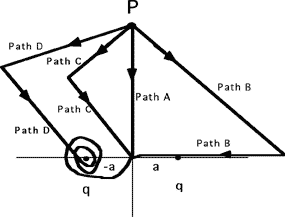Goal: Unspecified.
Source: Unspecified.
Consider moving a positive charge from point P to the origin along the
different paths shown in the diagram below. For which path would you do
the most work?

- Path A
- Path B
- Path C
- Path D
- Cannot determine
- None of the above






Commentary:
None provided.